You may already know that monarch butterflies need milkweed. But did you know that milkweed does not need monarchs? Milkweed is not pollinated by monarch butterflies!
Monarchs have long skinny legs, and even longer skinny tongues. They have learned, over eons of co-evolution with milkweed, to avoid the dangerous sticky sap of milkweed by carefully alighting on the sides of the flowers and lowering their long “tongues” (proboscises) into the flower to reach the sweet nectar.
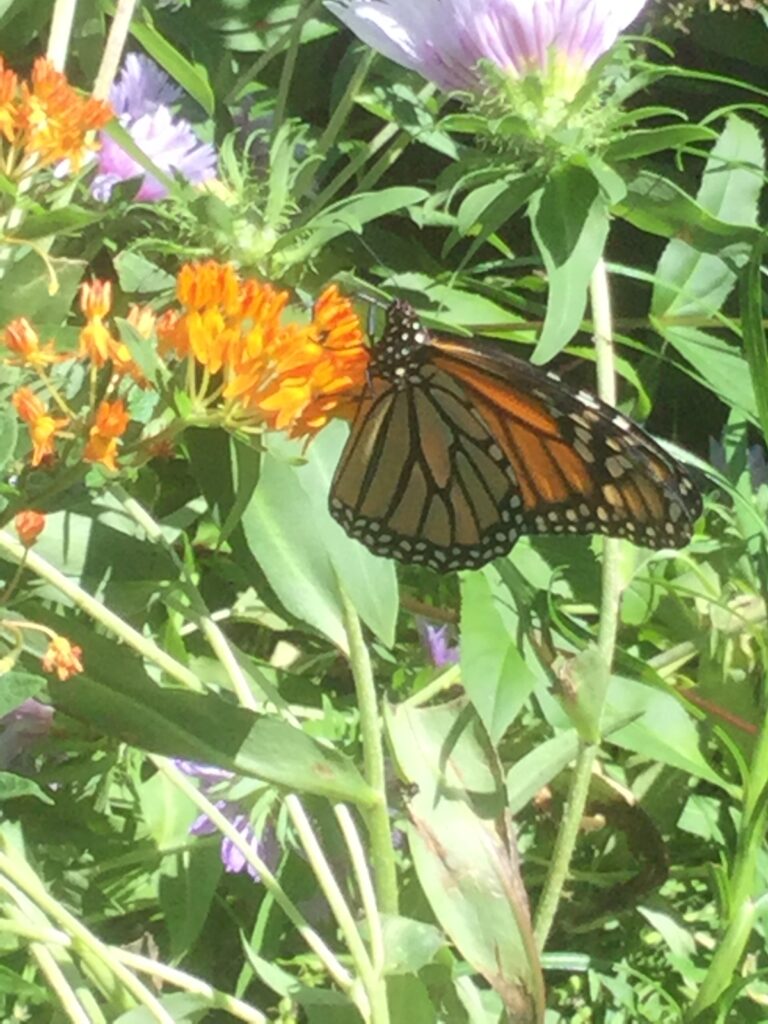
As they drink, monarchs are careful to not put their feet down inside the flowers where they might get stuck. Unfortunately for the milkweed, this means that monarchs don’t pick up milkweed pollen! The pollen is held in specialized structures inside the upper portion of the flower called “pollinia.” For pollination to occur, pollen from the pollinia has to reach the flower’s stigma, deeper inside the flower. Without successful pollination, no seeds develop, and milkweed does not reproduce.
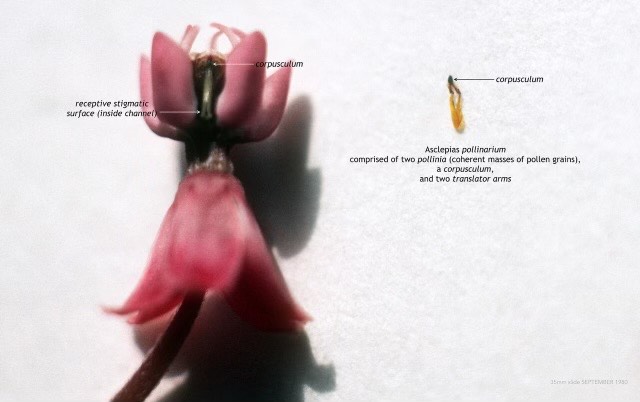
Graphic: Rick Darke
So, if not monarchs, who pollinates milkweed? It’s not any of the other butterfly species that also visit milkweed flowers without picking up pollen. Honeybees can’t do it. They are native to Europe where milkweed isn’t native, and they are too small to be strong fliers. If they go deep enough into milkweed blossoms to reach the pollen, they can be trapped, which is not good for either the bee or the milkweed.
Milkweed needs a strong flier, with stout hairy legs that will go down into the flower, catch the sticky pollinia, and carry pollen from one flower to the next. Luckily, nature has provided just the right insect for the job: carpenter bees!

Photo: Pixabay
Carpenter bees (Xylocopa spp.) are the most important pollinators of milkweed. Their legs are heavy and hairy, so they can step right into the flower and come out covered with sticky pollinia. They are strong fliers, so they do not get trapped, and they can carry the excess baggage. As the carpenter bee goes from flower to flower, pollen is dispersed, flowers are pollinated, seeds form, and milkweed is reproduced.
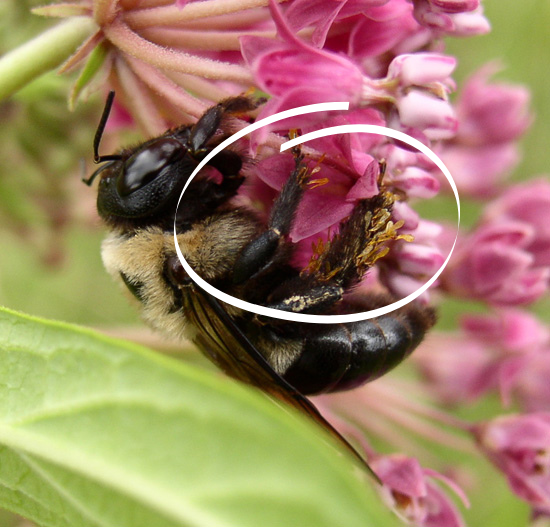
Photo: Polinizador’s Blog
Recently, friends who were developing a new pollinator garden for a historic property commented on the trouble they were having with carpenter bees burrowing into the eaves of the historic building. They said that exterminators had tried several applications of pesticide over the years, but the bees were nesting once again in the wooden structure.
Only later, when we learned of the connection between carpenter bees and milkweed, did we realize the contradiction! If we plant milkweed for monarchs in a pollinator garden, but then try to kill the carpenter bees nesting in the eaves of the house, we are pulling a thread in the complex web of life that can unravel the whole thing! If we kill carpenter bees, milkweed disappears. If milkweed disappears, so do monarchs.
When we try to pick out anything by itself, we find it hitched to everything else in the universe.
John Muir, Naturalist
So, what to do about carpenter bees? Well, they prefer to move into holes or cracks that are already established. They apparently don’t like the smell of citrus, and they don’t care for white paint. So, instead of pesticide, try filling existing holes and cracks or replacing weak structures. Apply citrus oil, or maybe re-paint. But killing them? They are definitely hitched to everything else in the universe.
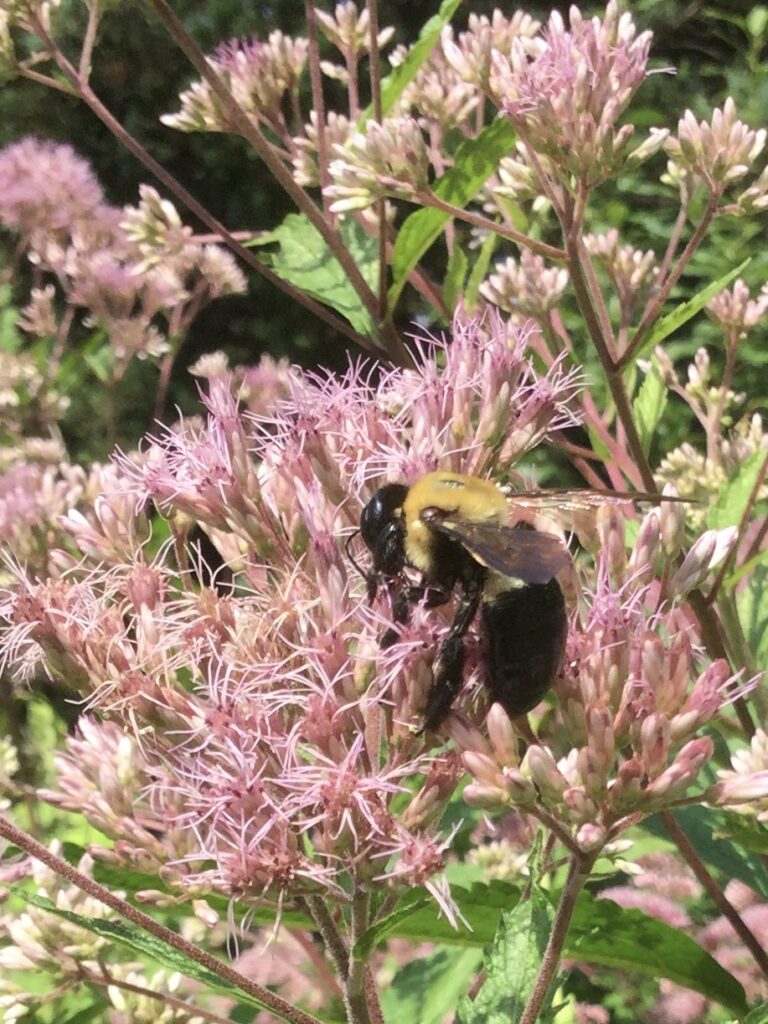
So, it is complicated. Nature is complicated. The more we learn, the better we understand the profound relationships among living things that co-evolved over millennia.
But that doesn’t mean it is difficult to do the right thing. If we simply start with the maxim “do no harm,” we can make better choices. Before we kill a “pest,” let’s understand that creature’s role in the world. Let’s avoid pesticide, apply fewer chemicals, plant native plants, plant more plants, allow a little mess for habitat, live and let live.
For more information on the complex relationship between milkweed and the insect world, see the post “ Marvelous Milkweed-Not Just for Monarchs!” linked here.

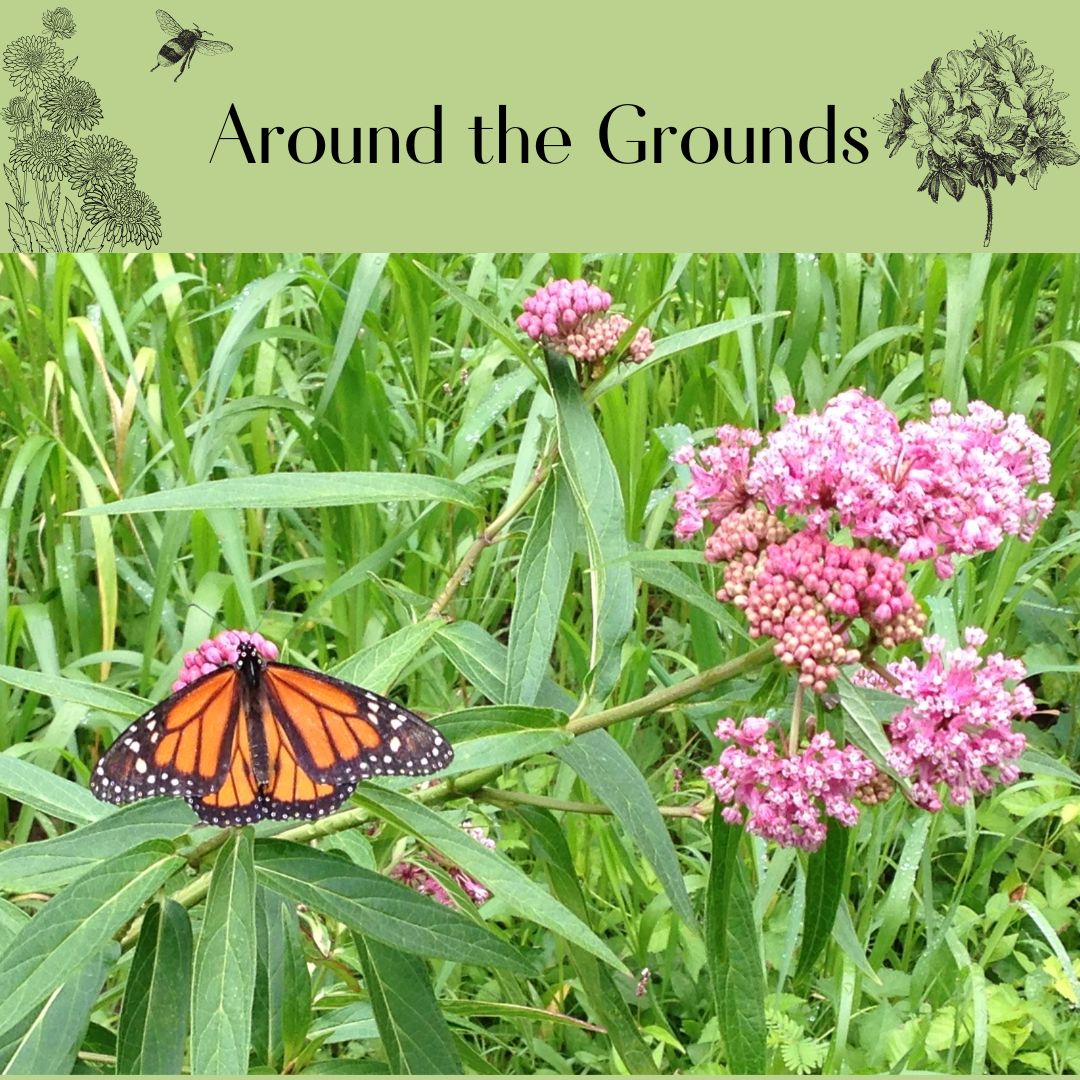
It’s been a long time since I saw milk weed in our Northern Illinois area…I remember it from when i was a boy. Thanks…I’ll be looking for it in the woods across the street
Modern farming methods have eliminated a lot of milkweed in the Midwest. But gardeners can make a big difference by planting the garden-friendly types in home flowerbeds. “Butterfly weed” is Asclepius tuberosa, and if you plant it, you are likely to attract any monarchs in the neighborhood.
Do carpenter bees look like wasps? We have a lot of trouble with wasps, not making nests, but entering teeny holes in the siding. Are we spraying the wrong bees?
Carpenter bees look like big bumblebees with shiny last segments — kind of roundish. Wasps always have a skinny waist and usually a longer body. I’m not happy seeing wasps nest around the house because they are more aggressive than bees if they are annoyed. Maybe try the citrus oil trick rather than pesticide — but only spray wasp nests after sundown when they are sleeping!
Oh this one was awesome. I didn’t realize monarch butterflies don’t help out with the pollination of milkweed – interesting. Also appreciate the natural solutions for helping carpenter bees on their way without eliminating them from their precious position in the ecosystem. <3
Carpenter bees are the great big ones that sound like construction drills — BZZZZZ! If you get near where they are nested, the males come out acting tough to scare you away, but it’s all bravado. They don’t even have stingers! Really no good reason to poison them.
They’ve been buzzing in my wooden gate for years. So, I guess its time too get some Milk
weed. Lovely article!
So many good choices for garden-worthy milkweed! Asclepius tuberosa (butterfly weed) is easy to find a place for — sunny, dry spot and it stays under 2 feet tall. And it is available in the species orange or a cultivar called ‘Hello Yellow’ that I love. Then Asclepius incarnata, is a lovely lavender or white flower, 3-4 feet tall. And Asclepius verticillata is white with very slender leaves. They all attract a variety of butterflies and bees, but it’s the bees that do the real pollination work!
One of your best efforts! Such interesting stuff. ??
Thanks for the support!
This is fascinating! My adjacent neighbors just replaced their mailbox posts because they were eaten by carpenter bees. I will forward this post. The bees are still there but now I’ll recommend that the wood be painted white! And yes, I have milkweed…of course!
I hope the neighbors want a white mailbox! I would try the citrus oil trick, too. And I have even read that carpenter bees don’t like loud music, but you may not want your neighbors trying that remedy! I think replacing the mailbox post will likely solve the problem.
We learn something new every day, don’t we? This is so interesting. Thank u Cathy!
John Muir said it well.
Lynne R.
And surprising, no?
Fascinating!